Winter Sports
INTERVIEW | Passion for Challenge: Meet Japan's Top Ice Climber Gihado Kadota
What is ice climbing, and will it be an Olympic sport? Japan's top athlete explains the sport and shares his passion for becoming the best in the world.
Read the backstory on the interview here.
Japan's top ice climbing athlete is passionate about his sport and he has his mind set on mounting the top of the world rankings. In an interview with JAPAN Forward, Gihado Kadota, 33, talks about what makes his sport so compelling and how he is preparing to take on the global competition.
Inviting the interview into his remote climbing gym in Gunma Prefecture, the Tokyo-based top athlete explains the sport and introduces its attractions.
Excerpts follow, in Gihado's own words.
Introducing Ice Climbing
At the moment we are in Gunma Prefecture at my axe climbing gym, in Takasaki City.
From the outside it might look like a condemned building. But when you enter you will see this amazing climbing wall on the inside. The beauty of this place is that all there is here is this climbing wall. There's no electricity, no running water, no gas. All there is to do here is train on the wall. It really makes you mentally strong to train here.
My first introduction to ice climbing happened about a year after I started mountain climbing. At the time I started going to more snow covered mountains. Slowly but surely, I wanted to climb more difficult, more technical routes on these mountains. At the time I felt that it was essential to learn the techniques specific to ice climbing, and shortly thereafter was invited to Yatsugatake, in Nagano Prefecture, by an ice climber at my bouldering gym.
Yatsugatake Mountain is like a mecca for ice climbing in Japan and was my very first place to try ice climbing.
When I first attempted to ice climb on an actual frozen waterfall, it was honestly very scary. I was a capable rock climber by that time so I had a little confidence in my ability. But there I could barely climb it at all, and I was scared the entire time as well.
Compared to those first terrifying attempts, my feeling towards ice climbing has changed from fear to joy. Now I am able to "talk" with the ice as I climb. It tells me "Here is OK," or "Going this way is safer." And I have a lot of fun working out my line while I am climbing.

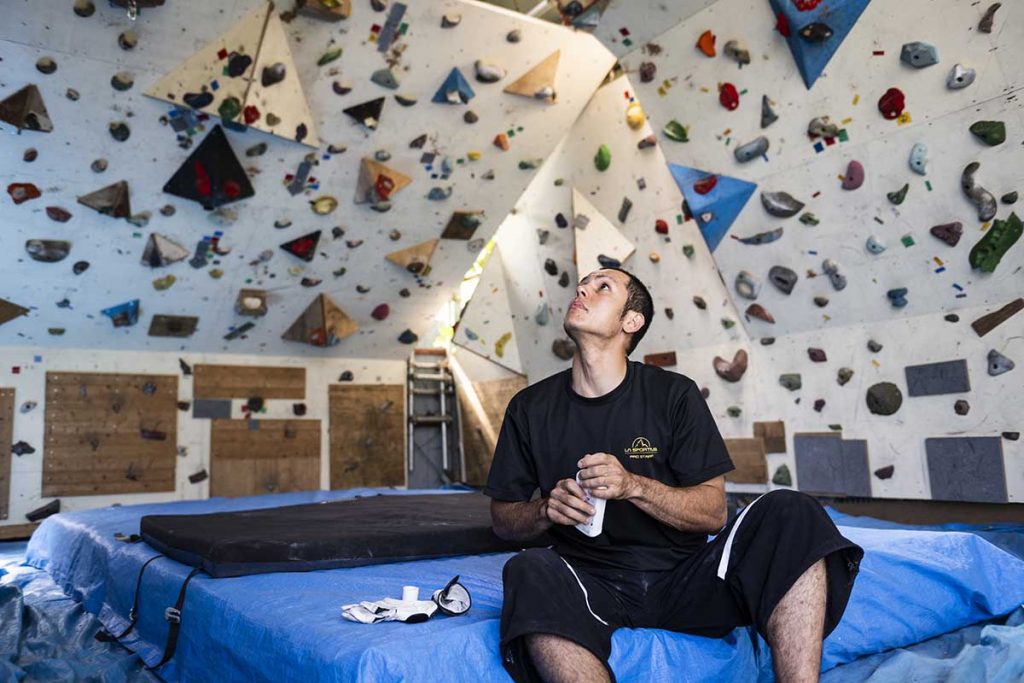

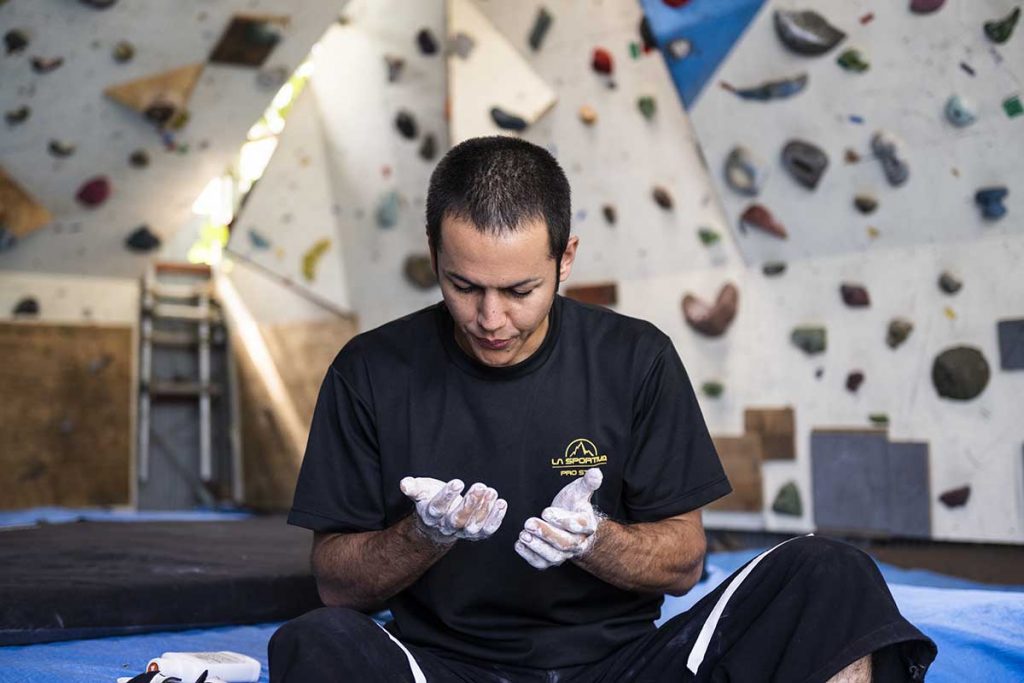
Training to Compete
My weekly training routine involves working on bouldering and lead climbing (climbing with my bare hands) at a local climbing gym during the week, and then coming to this gym on the weekends for practicing climbing with my axes. While here I am climbing from morning till night, and quite exhausted by the end of my training sessions.
As competitions begin to loom closer, I increase the amount of times I come here to practice climbing with my axes, as well as work on my physical training just before the competition.
The World Cup circuit starts in December and goes until the end of February. During this period there are about five or six competitions at different locations around the world.
At these World Cup ice climbing competitions there are actually no ice walls that the competitors climb. For us athletes, if the walls were to be made of ice, it would actually be too easy of a competition.
Furthermore, since the ice conditions change from the first climber to the last, it would get easier as the day went on. That's the reason why this kind of "dry tooling" is used. This allows for more difficult holds and steeper angles to be used in competition.
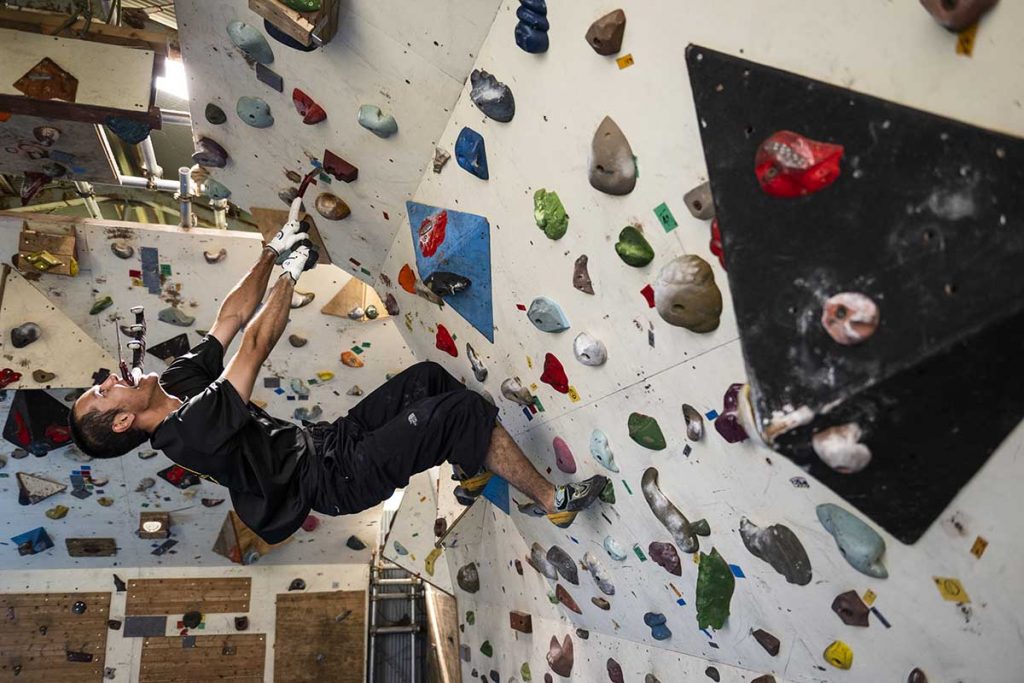
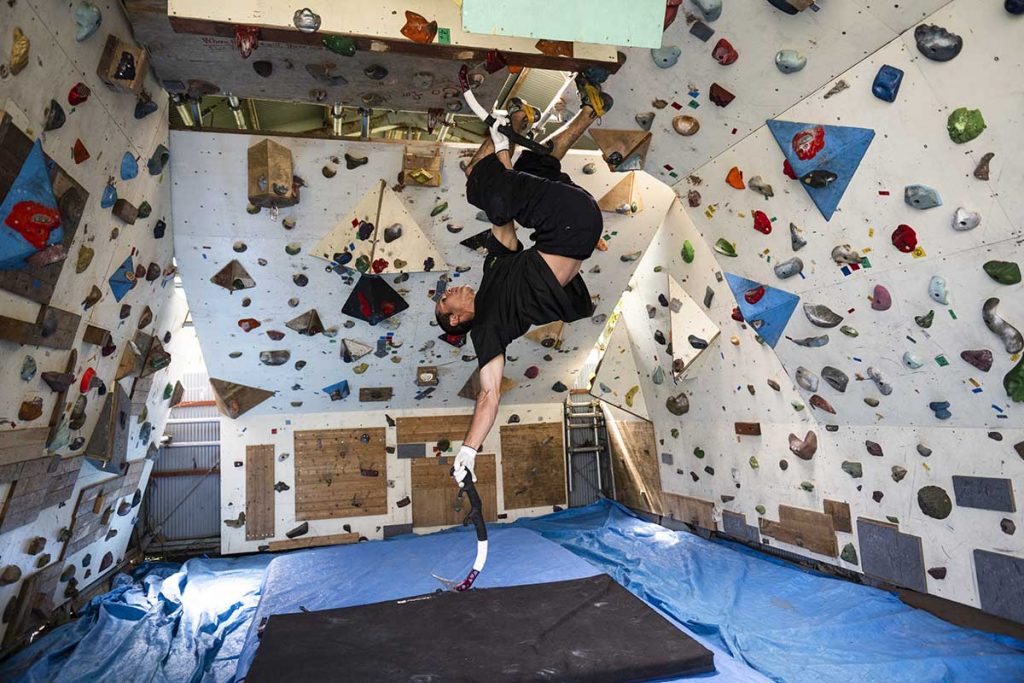
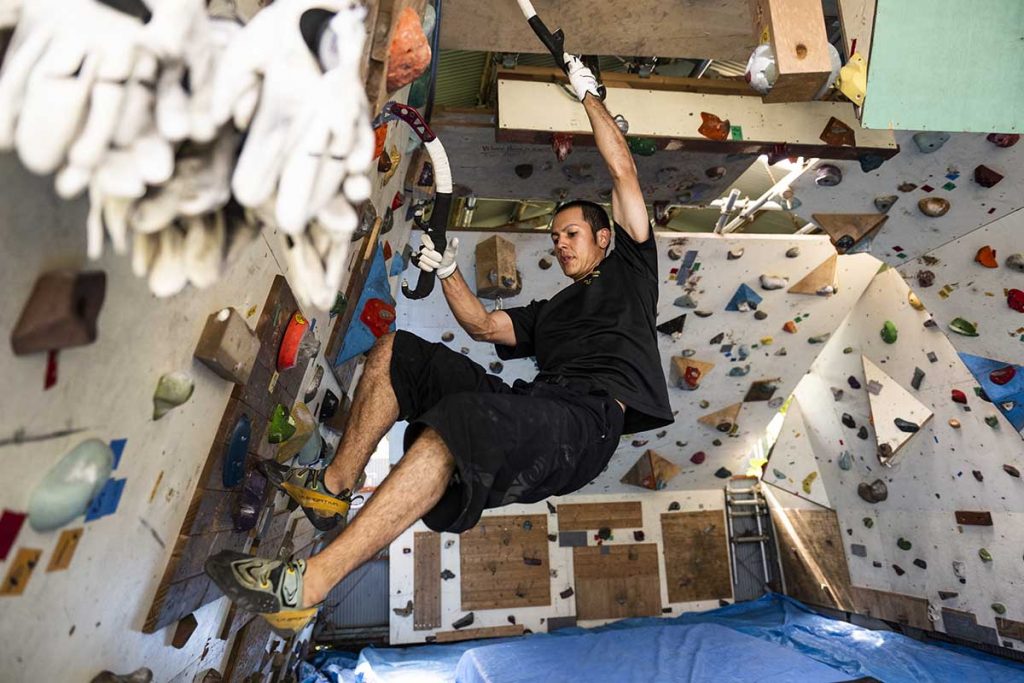

Different From Other Types of Climbing
A major difference between the holds used in bouldering and ice climbing is that ice climbing holds have metal parts in them. You can't hold them with your hands, but there are 2-3 mm holes in the holds that the tip of the ice axe fits into. And these types of holds are used to climb the wall.
When it comes to competition, of course the use of axes is different from bouldering competitions. But also, climbers will wear crampons (spikes that are attached to their boots used when climbing actual ice) and are allowed to stick in and kick off with their crampons wherever they like. These are probably the two major differences between ice climbing and bouldering competitions.
What Competition's Like
Much like bouldering competitions, the climbers will check their lines together, then attempt their routes one at a time. Meanwhile, other competitors stay backstage, where they cannot see what the climbers whose turn has come are doing.
With ice climbing competitions, climbers are allowed to place their feet wherever it suits their height and types of moves, which makes it sound easy, but it is actually quite difficult. You might think that because the crampons will leave marks on the walls when climbing, other climbers might take that as a hint as to where to put their own feet during the route. But actually, as each climber has a different body style, these markings may not be the answer for all climbers. This adds another level of difficulty when climbing in competition.
Taking On the High Level of International Challengers
In Japan I am ranked No. 1, but globally I am ranked No. 13. For my goals, though, being first in Japan is only a stepping stone. My goal is to climb the winner's podium at an Ice Climbing World Cup, something that no one from Japan has been able to accomplish yet. I hope to be the first to do this.
The difference between my skills, and the skills of the top climbers in the world is something I am working hard each year to fill in. But the more I am able to fill in, the more I understand just how much of a difference in skill there is.
These past years, every time I am able to gain a little on the top climbers, I notice that they are also improving and remain just a little ahead of me. Saying that, I have confidence that I am closing this gap little by little, and hope that this year I am able to explode during the upcoming competitions.
Seeking An Olympic Berth for Ice Climbing
With regards to the Olympics, the International Climbing and Mountaineering Federation (UIAA) had been working closely with the International Olympic Committee (IOC) to have ice climbing be part of the Olympics. And, during the 2014 Sochi Olympics, ice climbing was introduced as an exhibition sport leading up to the Pyeongchang Olympics, where ice climbing was to be included in the Winter Games. However, the Korean Alpine Federation and the Korean Olympic Committee came to a disagreement two months before the 2018 Games, and ice climbing was suddenly canceled.
This really upset a lot of ice climbers around the world. However, there is a new movement to have ice climbing reintroduced during the next Winter Olympics in Italy. I hope that ice climbing will become part of the Olympic Games before I retire from competition.
Ice climbing is not actually as dangerous as people think. Of course there are dangers, but the fun to be had while ice climbing greatly outweighs any of these dangers. If you try it even once, I am sure you will fall in love with ice climbing.
RELATED:
Interview by: Jason Halayko
Jason Halayako is a longtime photographer whose "A Photographer's Notes" column has been published in JAPAN Forward for several years. Read his articles here.











You must be logged in to post a comment Login